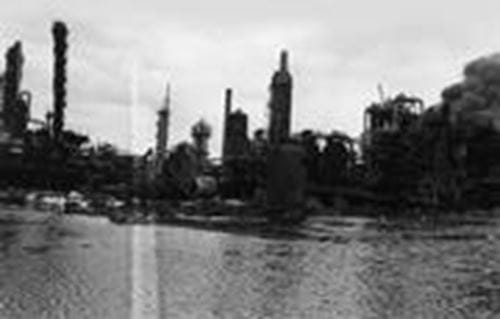Lasting safety lessons as Flixborough remembered
29th May 2014

The UK’s worst mainland process plant disaster – Flixborough – is continuing to influence safety in the chemical and process industries, as engineers mark the 40th anniversary of the accident.
The explosion at the Flixborough Nypro Chemicals site near Scunthorpe, UK, killed 28 people and injured 36 others on 1 June 1974. It resulted in the almost complete destruction of the plant. Further afield, the blast injured another 53 people and caused extensive damage to around 2,000 buildings.
With the exception of the Buncefield fire in 2005, it remains the biggest post war explosion in the UK.
The cause of the disaster was the installation of a temporary pipe to allow production to continue whilst a large reactor was removed for repair. The failure of a flexible bellows next to the temporary pipe, led to a massive release of boiling cyclohexane – similar to petrol – which ignited causing the explosion.
At the time there were no specific UK regulations to control major industrial hazards. The incident also exposed weaknesses in the understanding of hazards, the design of buildings, management systems and organisation.
Commenting on Flixborough1, industry safety pioneer, adviser, lecturer and writer, Professor Trevor Kletz, said: “Flixborough destroyed the confident feeling that we can always keep large quantities of hazardous chemicals under control, and therefore we should keep the amounts of them in our plants as low as reasonably practicable or use safer materials instead. Inherently, safer design arrived on the chemical industry’s agenda.”
Today, 40 years later, chemical engineering undergraduates are routinely taught the lessons from Flixborough and the incident is continuing to influence safety in industries such as oil, gas, chemicals, pharmaceuticals and many other process industries.
Robin Turney, a Fellow of the Institution of Chemical Engineers (IChemE), who has studied the accident and its aftermath in detail, said: “Flixborough has left a lasting legacy on the chemical and process industries – in the UK, Europe and worldwide.
“The accident occurred in an era where early, but concerted efforts were being made to improve safety. Flixborough coincided with the introduction of Health and Safety at Work Act in the UK and spurred the development of the European Seveso Directive – named after an accident at a chemical manufacturing plant in Italy in 1976 – strengthening regulation further in 1982.'
Turney continued: “The past 40 years have seen many improvements in process safety through regulations, technical measures and better management. The avoidance of further disasters will require constant attention to these together with the active involvement of directors and senior managers to create an organisational ‘safety culture’ which promotes open dialogue and seeks to identify and correct weaknesses.
“Flixborough, and the people who lost their lives, were remembered earlier this month at Hazards 24 – the major global conference on process safety. Combined with dedicated publications and new charter-level qualifications – such as Professional Process Safety Engineer – better communication, information sharing and knowledge are just some of the legacies influenced by Flixborough to improve safety and help prevent loss of life in the future.”